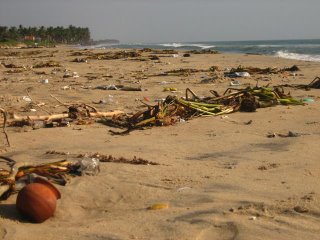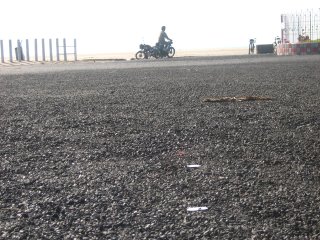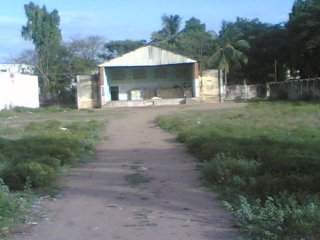India: Temporary shelter, permanent painBy
Max MartinCHENNAI, (indiadisasters.org): During the last rainy season when her temporary shelter was flooded Elanji had to spend the night standing up, holding her baby, in ankle-deep water.
This year again Elanji and her neighbours in this tsunami shelter cluster in Puthukuppam, Nagapattinam - seven hours drive from Chennai - are awaiting the rains with fear.
Most of the people living in 178 temporary shelter sites still left in Tamil Nadu live in such fear of rain, notes a study by the prestigious Loyola College in Chennai.
People line their leaky roofs with tarpaulin sheets and lay corrugated metal sheets to cover the floor, knowing well that water will still flood in. "Last time we often had to spend the night sitting on a single cot so as not to get wet," said another resident.
The first rains of the north-eastern monsoon have already hit parts of India’s eastern coast in Tamil Nadu. Hectic repairs are on at Nagapattinam, where bulk of the remaining shelters are located. It is a daunting task.
The Loyola study notes that in Tamil Nadu 76 per cent of shelters need repair or replacement of roofs; and 78 per cent need wall repair.
Officials said that the shelters - each costing Rs 8000 - were meant initially to be used for only three to five months of residence. But they are still around 21 months after the tsunami, as the government so far could finish only one-fifth of the 54,620 tsunami rehabilitation houses proposed to be built for those displaced by the Asian tsunami.
A tour along the study areas in Kanyakumari, Nagapattinam, Kancheepuram,Cuddalore and Villupuram revealed a striking picture - blown-off roofs, damaged walls, low-lying floors and the sheer helplessness of people.
"The findings were striking indeed," said Gladston Xavier, a social work lecturer at the Loyola who led the study team with the support of Oxfam America. "There was no adherence to Sphere standards (of humanitarian relief).
Officials acknowledge that there is a big problem. "In Nagapattinam it is a matter of concern, as many shelter sites are located in lowlands," said C V Sankar, an Indian Administrative Service (IAS) officer on special duty, who supervises the tsunami rehabilitation in Tamil Nadu.
"These sites face the risk of flood, and it can be very bad when it rains," Sankar said. "The district collectors have been instructed to make the repairs before the rainy season," he said in an interview.
Garbriel Britto, former policy and advocacy advisor of Oxfam International who was part of the study, said that Tamil Nadu still fared better compared with the response to earlier disasters elsewhere. "Systems were functional here unlike in, say, Kutch, a forlorn place (where an earthquake struck in 2001). The people here got basic services fast."
"There was an initial rush of goodies, often at unmanageable levels - I found someone who got nine stoves for instance; then everybody seems to have gone into a slumber."
The Loyola study is a response to this slumber. Its context: "…in 2005, practically all the sites were flooded four times; the roofs leaked; food grains got soaked; fires gutted the shelters in over eight places; chicken pox spread in several settlements, and over time the temporary shelter materials had degraded. It was urgent that an appraisal be done…"
Most of the houses were damaged in earlier floods and needed repairs, he study noted. One-third of the houses needed overall repairs and nother one-third needed outright replacement. Worse, in about 80 per cent of the shelters, there is no provision for storm drains.
People living in more than half the shelter sites suffered mosquito bites. In the case of Salavankuppam of Kancheepuram District almost all families reported cases of Chickungunya a disease, spread by mosquitoes and marked by high fever and body-ache.
At Selavankuppam, the people are stuck in cluster of shabby shelters close to the East Coast Highway, as the government could not find a good place for their rehabilitation. "Here it (chikungunya) attacked everyone. I could not even walk, said Susheela, a resident.
Under the original tsunami rehabilitation package, 54,620 houses need to be built - 22,060 by the government in Chennai and Thriuvallur districts and the rest by NGOs. The Government has handed over 8,077 houses and 3,179 more houses were ready by 30th August.
Another 17,542 houses are under construction, still leaving 25,822 houses yet to be built. Finding adequate, acceptable land is a problem, officials said.
In the meanwhile, the rains are gathering strength and the situation ahead looks rather grim.
 File photo
File photo




